
Zagreb: A Hidden Gem in the Heart of Europe
Discover Zagreb: Croatia’s Capital of Charm, Culture, and History. From medieval streets to vibrant nightlife, this city has something for every traveler.
Zagreb, the capital of Croatia, is a city that offers a unique blend of history, culture, and modernity. Nestled between the slopes of the Medvednica mountain and the banks of the Sava River, Zagreb is a city that effortlessly combines the charm of its medieval old town with the vibrancy of its contemporary urban life. The city is divided into two main parts: the Upper Town (Gornji Grad), with its cobblestone streets and historic buildings, and the Lower Town (Donji Grad), which features wide boulevards, lush parks, and an array of museums and galleries. The Upper Town is home to some of Zagreb's most iconic landmarks, including St. Mark's Church with its colorful tiled roof, the ancient Zagreb Cathedral, and the bustling Dolac Market, where you can sample local delicacies and fresh produce. Don't miss the chance to explore the charming streets of Tkalčićeva, lined with cafes, bars, and boutiques, perfect for a leisurely afternoon stroll. In the Lower Town, you'll find the main square, Trg bana Jelačića, which serves as the city's central hub. Nearby, the Art Pavilion, the Croatian National Theatre, and the Mimara Museum offer a glimpse into the city's rich cultural scene. For a relaxing escape, visit the beautiful Zrinjevac Park or take a short trip to the nearby Maksimir Park, one of the oldest public parks in Europe. Zagreb is also known for its vibrant nightlife, with a wide range of bars, clubs, and live music venues to choose from. Whether you're interested in exploring the city's historical sites, enjoying its cultural offerings, or simply soaking up its lively atmosphere, Zagreb has something to offer every traveler.
Local tips in Zagreb
- Visit Dolac Market early in the morning to experience the freshest local produce and a lively atmosphere.
- Take a funicular ride from the Lower Town to the Upper Town for stunning city views.
- Try local delicacies such as štrukli and ćevapi at traditional Croatian restaurants.
- Explore the Museum of Broken Relationships for a unique and emotional experience.
- Don't miss the chance to visit Zagreb during Advent, when the city is transformed into a winter wonderland.
Neighbourhoods in Zagreb
Zagreb: A Hidden Gem in the Heart of Europe
Zagreb, the capital of Croatia, is a city that offers a unique blend of history, culture, and modernity. Nestled between the slopes of the Medvednica mountain and the banks of the Sava River, Zagreb is a city that effortlessly combines the charm of its medieval old town with the vibrancy of its contemporary urban life. The city is divided into two main parts: the Upper Town (Gornji Grad), with its cobblestone streets and historic buildings, and the Lower Town (Donji Grad), which features wide boulevards, lush parks, and an array of museums and galleries. The Upper Town is home to some of Zagreb's most iconic landmarks, including St. Mark's Church with its colorful tiled roof, the ancient Zagreb Cathedral, and the bustling Dolac Market, where you can sample local delicacies and fresh produce. Don't miss the chance to explore the charming streets of Tkalčićeva, lined with cafes, bars, and boutiques, perfect for a leisurely afternoon stroll. In the Lower Town, you'll find the main square, Trg bana Jelačića, which serves as the city's central hub. Nearby, the Art Pavilion, the Croatian National Theatre, and the Mimara Museum offer a glimpse into the city's rich cultural scene. For a relaxing escape, visit the beautiful Zrinjevac Park or take a short trip to the nearby Maksimir Park, one of the oldest public parks in Europe. Zagreb is also known for its vibrant nightlife, with a wide range of bars, clubs, and live music venues to choose from. Whether you're interested in exploring the city's historical sites, enjoying its cultural offerings, or simply soaking up its lively atmosphere, Zagreb has something to offer every traveler.
When is the best time to go to Zagreb?
Iconic landmarks you can’t miss
Ban Josip Jelačić Statue
Discover the heart of Zagreb at the Ban Josip Jelačić Statue, a historical landmark surrounded by vibrant cafes and rich cultural heritage.

Park Maksimir
Explore the lush landscapes and serene lakes of Park Maksimir, a historic green oasis in the heart of Zagreb, perfect for relaxation and exploration.

Cathedral of Zagreb
Experience the architectural grandeur and historical significance of the Cathedral of Zagreb, a must-see landmark in Croatia's vibrant capital.

Croatian National Theatre in Zagreb
Experience the grandeur of the Croatian National Theatre in Zagreb, a cultural landmark showcasing the brilliance of performing arts and rich historical architecture.
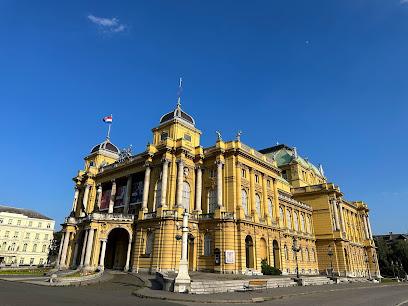
Zrinjevac
Experience the charm of Zrinjevac Park in Zagreb, a beautiful urban oasis perfect for relaxation, cultural events, and festive celebrations.

Museum of Illusions
Experience the astonishing world of perception at Zagreb's Museum of Illusions, where fun meets the fascinating art of optical tricks.

Trg Kralja Tomislava
Discover the serene beauty of Trg Kralja Tomislava, an iconic city park in Zagreb that offers lush landscapes and a peaceful escape from urban life.

Museum of Broken Relationships
Experience the poignant stories of love and loss at Zagreb's Museum of Broken Relationships, where personal artifacts tell the tales of past connections.

Stone Gate
Explore Zagreb's Stone Gate, a historic landmark that embodies the spirit of the city with its rich history and captivating architecture.

Free Spirit Tours - Zagreb free tour and other tours
Explore the rich history and vibrant culture of Zagreb with Free Spirit Tours, a must-do experience for every traveler in Croatia's capital.

Lotrščak Tower
Experience stunning views and rich history at the iconic Lotrščak Tower in Zagreb, a must-visit landmark for every traveler.

Chocolate Museum Zagreb
Explore the enchanting Chocolate Museum in Zagreb for an unforgettable, interactive experience filled with history, creativity, and delightful tastings.

Zagreb 360° observation deck
Discover breathtaking views of Zagreb from the Zagreb 360° Observation Deck, where history meets stunning panoramas in Croatia's vibrant capital.

Museum of Hangovers
Discover the amusing history of drinking and hangovers at the Museum of Hangovers in Zagreb, where laughter meets culture in a unique museum experience.

Meteorological Post
Explore the Meteorological Post in Zagreb, a historical gem nestled in Zrinjevac park, offering a glimpse into the past amidst beautiful surroundings.

Unmissable attractions to see
Park Maksimir
Immerse yourself in the natural beauty of Park Maksimir, Zagreb's premier park featuring lush landscapes, serene lakes, and a historic charm.

Cathedral of Zagreb
Discover the stunning Cathedral of Zagreb, a Gothic masterpiece steeped in history and culture, located in the heart of Croatia's vibrant capital.

Bundek City Park
Explore the lush landscapes and vibrant recreational spaces of Bundek City Park, Zagreb's serene urban oasis for relaxation and outdoor fun.

Bundek City Park
Explore Bundek City Park, a serene urban oasis in Zagreb with lush green spaces, recreational activities, and vibrant events for all ages.

Koncertna dvorana Vatroslava Lisinskog
Discover the artistic heart of Zagreb at the Vatroslav Lisinski Concert Hall, where music and culture converge in a stunning architectural masterpiece.

Trakoscan Castle
Explore Trakošćan Castle: A breathtaking blend of history, art, and nature in the heart of Croatia.

Croatian National Theatre in Zagreb
Explore the cultural richness of Zagreb at the Croatian National Theatre, a stunning venue for opera, ballet, and drama performances.

Tuhelj d.o.o
Discover the healing power of nature at Terme Tuhelj, where thermal waters and wellness treatments create the ultimate spa escape.

Zrinjevac
Explore Zrinjevac, a lush park in Zagreb, where history meets nature amidst beautiful trees and serene fountains.

Museum of Illusions
Discover the extraordinary at the Museum of Illusions in Zagreb, where reality bends and imagination takes flight through stunning optical illusions.

King Tomislav’s Square
Discover the beauty and cultural significance of King Tomislav's Square in Zagreb, a perfect spot for relaxation and exploration.

Museum of Broken Relationships
Explore the poignant stories of love and loss at the Museum of Broken Relationships in Zagreb, a unique journey through heartbreak and healing.

Botanical Garden of the Faculty of Science, University of Zagreb
Explore the serene beauty of the Botanical Garden of the Faculty of Science in Zagreb, a tranquil oasis filled with diverse plant life and stunning landscapes.

Krapina Neanderthal Museum
Explore the rich heritage of Neanderthals at Krapina Neanderthal Museum, where history and discovery come alive in a stunning setting.

Stone Gate
Explore the historic Stone Gate in Zagreb, a significant religious and cultural landmark filled with stories of faith, resilience, and beautiful architecture.

Essential places to dine
Nokturno
Experience the best of European cuisine at Nokturno in Zagreb – where every meal is a celebration of flavor and tradition.

La Štruk
Experience the authentic taste of Croatia at La Štruk in Zagreb, where traditional dishes like štrukli are crafted with love and passion.

Vinodol
Experience authentic Croatian flavors at Vinodol, where traditional recipes meet modern European cuisine in Zagreb's vibrant dining scene.

Boban
Discover the essence of Italy at Boban - where authentic flavors meet warm hospitality in the heart of Zagreb.

Basta
Experience gourmet pizza at Basta in Zagreb - where authentic flavors meet modern culinary artistry.

Curry Bowl
Experience authentic Sri Lankan cuisine at Curry Bowl in Zagreb - where vibrant flavors meet warm hospitality.

Pri zvoncu
Experience authentic Croatian cuisine in Zagreb at Pri zvoncu - where every dish is a celebration of local flavors.

Stari Fijaker
Experience authentic Croatian cuisine at Stari Fijaker in Zagreb – where every dish tells a story.

Konoba Didov san
Savor traditional Croatian dishes at Konoba Didov San in Zagreb - a must-visit for food lovers seeking authentic flavors.

Otto & Frank
Discover Zagreb's culinary delight at Otto & Frank Bistro - perfect for breakfast, brunch and experiencing authentic Croatian flavors.

HERITAGE - Croatian Street Food & Shop
Experience authentic Croatian street food and unique souvenirs at Heritage - a delightful culinary journey in Zagreb.

GOSTIONICA RESTORAN PURGER
Experience authentic Croatian cuisine at Gostionica Restoran Purger in Zagreb—where tradition meets taste.

EL TORO Restaurant
Experience culinary excellence at EL TORO Restaurant in Zagreb - where local flavors meet international cuisine in a warm and inviting atmosphere.

Pod Zidom Bistro
Experience exquisite dining at Pod Zidom Bistro in Zagreb - where local flavors meet international cuisine in a cozy atmosphere.

Gostionica Ficlek
Discover authentic Croatian flavors at Gostionica Ficlek in Zagreb—where every dish tells a story steeped in tradition.

Markets, malls and hidden boutiques
City Center one East
Discover a shopping paradise at City Center One East, Zagreb's premier destination for retail, dining, and entertainment.

Avenue Mall
Experience the ultimate shopping adventure at Avenue Mall, Zagreb's premier destination for fashion, dining, and entertainment.

City Center one West
Discover the best of Zagreb shopping at City Center One West, featuring top brands, delicious dining options, and vibrant events for all ages.
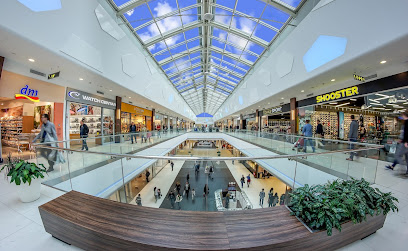
Supernova Buzin
Explore Supernova Buzin, a vibrant shopping mall in Croatia with diverse shops, delicious dining, and family-friendly amenities for an unforgettable experience.

Designer Outlet Croatia
Shop the latest trends at Designer Outlet Croatia, where luxury meets affordability in a stunning shopping environment.

Centar Cvjetni
Experience Zagreb's dynamic shopping scene at Centar Cvjetni, your go-to destination for shopping, dining, and entertainment.
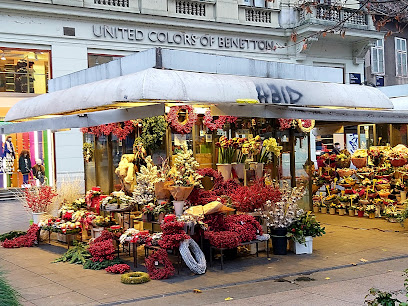
Branimir mingle mall
Experience the best of shopping and entertainment at Branimir Mingle Mall in Zagreb, a must-visit destination for every traveler.

Centar Kaptol
Experience the best of Zagreb at Centar Kaptol, a shopping mall offering high-end boutiques, delicious dining, and vibrant events.

Nama
Discover Nama, Zagreb's premier department store, blending history and modern shopping with a unique selection of fashion, home goods, and local specialties.

Volim Ljuto shop
Explore Volim Ljuto Shop in Zagreb for an unforgettable journey through Croatia's finest spices and gourmet delights, perfect for every food lover.

Ornament
Explore Zagreb's Ornament for exquisite Indian textiles and unique local crafts, a true treasure trove for discerning tourists.

Souvenirs & more ZAGREB
Explore Souvenirs & More in Zagreb: A Gift Shop Offering Unique Souvenirs and Local Crafts to Capture Your Croatian Experience.

Ulični Ormar
Explore Ulični Ormar in Zagreb for a unique vintage shopping experience that captures the city's eclectic fashion spirit.

Vandal Shop Zagreb
Discover the pulse of Zagreb's fashion scene at Vandal Shop, where local designs meet modern style in a vibrant shopping experience.

Soho
Discover unique handcrafted gifts and souvenirs at Soho, the charming gift shop in the heart of Zagreb, capturing the essence of Croatian culture.

Essential bars & hidden hideouts
Vintage Industrial Bar
Experience Zagreb's vibrant nightlife at Vintage Industrial Bar, where rock music meets serene garden vibes for a truly unique outing.

Harat's Pub
Experience the charm of an authentic Irish pub in Zagreb, where great food, drinks, and atmosphere come together for an unforgettable night out.

Mr. Fogg
Discover the unique ambiance of Mr. Fogg in Zagreb — a charming pub and café that invites you to unwind with delicious drinks and a vibrant atmosphere.
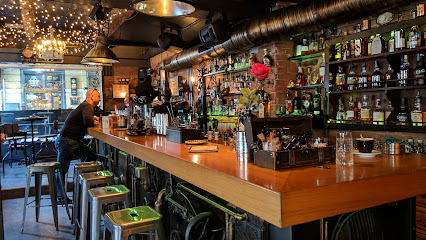
The Swanky Bar
Experience the vibrant nightlife of Zagreb at The Swanky Bar, where expertly crafted cocktails and a lively atmosphere await.

Tolkien's House
Experience the enchanting ambiance of Tolkien's House, a whimsical pub in Zagreb inspired by the legendary author J.R.R. Tolkien.

Bulldog Zagreb
Discover the vibrant atmosphere of Bulldog Zagreb, the perfect bar for socializing, enjoying drinks, and experiencing local nightlife in the heart of the city.

Oliver Twist
Discover the heart of Irish hospitality at Oliver Twist, a cozy pub in Zagreb offering delicious food, drinks, and vibrant local culture.

La Bodega Zagreb
Discover the heart of Zagreb through exquisite wines and a lively atmosphere at La Bodega, your go-to wine bar in the city.

TESLA New Generation
Discover the modern charm and vibrant nightlife at TESLA New Generation, a premier bar in the heart of Zagreb offering unique drinks and a lively atmosphere.
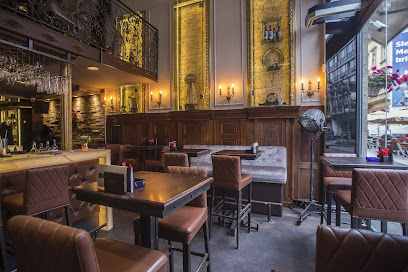
Pločnik
Explore Pločnik in Zagreb - a unique bar blending craft beer, live music, and a vinyl shop for an unforgettable nightlife experience.

Dezman mini bar
Discover the perfect blend of local charm and international flair at Dezman Mini Bar in Zagreb, where every drink tells a story.

Rock&beer club Alcatraz
Experience the vibrant nightlife of Zagreb at Rock&Beer Club Alcatraz, where rock music and cabaret performances create unforgettable evenings.
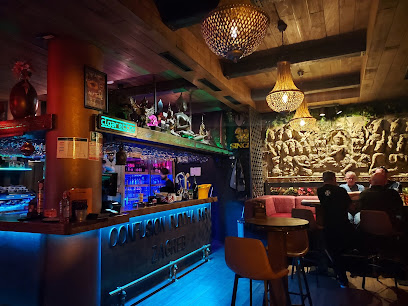
Mojo bar, wine rakija & co.
Discover the essence of Zagreb at Mojo Bar, where fine wines and rakija meet a vibrant atmosphere perfect for relaxation and socializing.
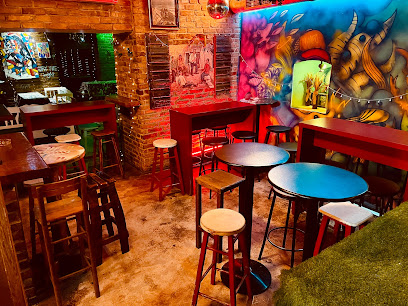
The Old Pharmacy
Discover the charm of The Old Pharmacy Pub in Zagreb, where vintage pharmacy memorabilia meets modern pub culture for an unforgettable experience.

Booze and Blues
Experience the best of Zagreb's nightlife at Booze and Blues, where live music meets delicious drinks in a vibrant atmosphere.

Local Phrases
-
- HelloBok
[bohk] - GoodbyeDoviđenja
[doh-vee-jen-ya] - YesDa
[dah] - NoNe
[neh] - Please/You're welcomeMolim
[moh-leem] - Thank youHvala
[hvah-lah] - Excuse me/SorryOprostite
[oh-proh-stee-teh] - How are you?Kako si?
[kah-koh see] - Fine. And you?Dobro. A ti?
[doh-broh. ah tee] - Do you speak English?Govorite li engleski?
[goh-voh-ree-teh lee eng-lehs-kee] - I don't understandNe razumijem
[neh rah-zoo-mee-yem]
- HelloBok
-
- I'd like to see the menu, pleaseMolio bih jelovnik, molim
[moh-lee-oh bee yeh-lohv-neek, moh-leem] - I don't eat meatNe jedem meso
[neh yeh-dem meh-soh] - Cheers!Živjeli!
[zhee-vye-lee] - I would like to pay, pleaseŽelim platiti, molim
[zhel-eem plah-tee-tee, moh-leem]
- I'd like to see the menu, pleaseMolio bih jelovnik, molim
-
- Help!Upomoć!
[oo-poh-mohtch] - Go away!Odlazi!
[oh-dlah-zee] - Call the Police!Pozovite policiju!
[poh-zoh-vee-teh poh-lee-tsee-yoo] - Call a doctor!Pozovite doktora!
[poh-zoh-vee-teh dohk-toh-rah] - I'm lostIzgubio sam se
[eez-goo-byoh sahm seh] - I'm illBolestan sam
[boh-leh-stahn sahm]
- Help!Upomoć!
-
- I'd like to buy...Želim kupiti...
[zhel-eem koo-pee-tee] - I'm just lookingSamo gledam
[sah-moh gleh-dahm] - How much is it?Koliko košta?
[koh-lee-koh kohs-tah] - That's too expensiveTo je preskupo
[toh yeh prehs-koo-poh] - Can you lower the price?Možete li spustiti cijenu?
[moh-zheh-teh lee spoos-tee-tee tsee-yeh-noo]
- I'd like to buy...Želim kupiti...
-
- What time is it?Koliko je sati?
[koh-lee-koh yeh sah-tee] - It's one o'clockJedan je sat
[yeh-dahn yeh saht] - Half past (10)Pola (deset)
[poh-lah deh-seht] - MorningJutro
[yoo-troh] - AfternoonPopodne
[poh-pohd-neh] - EveningVečer
[veh-chehr] - YesterdayJučer
[yoo-cher] - TodayDanas
[dah-nahs] - TomorrowSutra
[soo-trah] - 1Jedan
[yeh-dahn] - 2Dva
[dvah] - 3Tri
[tree] - 4Četiri
[cheh-tee-ree] - 5Pet
[peht] - 6Šest
[shehst] - 7Sedam
[seh-dahm] - 8Osam
[oh-sahm] - 9Devet
[deh-veht] - 10Deset
[deh-seht]
- What time is it?Koliko je sati?
-
- Where's a/the...?Gdje je...
[gdyeh yeh] - What's the address?Koja je adresa?
[koh-yah yeh ah-deh-sah] - Can you show me (on the map)?Možete li mi pokazati (na karti)?
[moh-zheh-teh lee mee poh-kah-zah-tee nah kahr-tee] - When's the next (bus)?Kada je sljedeći (autobus)?
[kah-dah yeh sleh-deh-chee ow-toh-boos] - A ticket (to ....)Jednu kartu (do ...)
[yehd-noo kahr-too doh]
- Where's a/the...?Gdje je...
History of Zagreb
-
Zagreb's history dates back to Roman times when a settlement known as Andautonia existed in the area. The modern city of Zagreb began to take shape in the early Middle Ages, with the establishment of two key settlements: Kaptol, a religious center founded in 1094, and Gradec, a fortified town granted a royal charter by King Béla IV in 1242. These two settlements developed separately but were united in 1851 to form the city of Zagreb.
-
During the medieval period, Zagreb was a significant religious and trade center. Kaptol housed the Zagreb Cathedral, which became the seat of the bishopric, while Gradec was a hub for artisans and merchants. The city faced numerous challenges, including invasions by the Mongols in the 13th century, but it continually rebuilt and fortified itself, eventually becoming a prominent city in the Kingdom of Croatia and Hungary.
-
In the early 16th century, following the Battle of Mohács and the Ottoman advances into Central Europe, Zagreb came under the control of the Habsburg Monarchy. This period saw significant urban development and the construction of important architectural landmarks. The city also became a crucial administrative and military center in the Habsburg's defensive system against the Ottomans.
-
The 19th century was a transformative period for Zagreb. With the unification of Kaptol and Gradec under one municipal administration in 1851, the city began to modernize rapidly. The construction of the railway in 1862 connected Zagreb to other major European cities, spurring economic growth. This era also saw the rise of Croatian national consciousness and cultural revival, with Zagreb becoming the epicenter of the Illyrian Movement aimed at promoting Croatian language and culture.
-
After World War I and the dissolution of the Austro-Hungarian Empire, Zagreb became part of the newly formed Kingdom of Serbs, Croats, and Slovenes, later renamed Yugoslavia. The interwar period was marked by significant political and social changes, as well as continued urban development. Zagreb grew into a major industrial and cultural center, with new institutions, theaters, and museums enriching the city's cultural landscape.
-
During World War II, Zagreb became the capital of the Independent State of Croatia, a puppet state of Nazi Germany. The period was marked by political turmoil and significant suffering, with many citizens facing persecution. After the war, Zagreb became a part of Socialist Yugoslavia and experienced rapid industrialization and modernization. The city expanded significantly, with new residential areas, factories, and cultural institutions being established.
-
Following the breakup of Yugoslavia in the early 1990s, Zagreb became the capital of the newly independent Republic of Croatia. The city underwent significant political and economic changes, adapting to a market economy and democratic governance. Modern Zagreb is a vibrant metropolis known for its rich cultural heritage, historic architecture, and thriving arts scene. It is a major European city that continues to grow and evolve, attracting visitors from around the world.
Zagreb Essentials
-
Zagreb, the capital of Croatia, is accessible via various modes of transportation. Franjo Tuđman Airport (ZAG) is the main international gateway, located about 17 km from the city center. Direct flights connect Zagreb to many European cities and several intercontinental destinations. The city is also well-connected by train, with the main railway station (Glavni Kolodvor) serving as a hub for domestic and international routes. For those traveling by road, Zagreb is accessible via several major highways, and international bus services operate from various European cities.
-
Zagreb boasts an efficient public transportation system, including trams, buses, and trains. The tram network is extensive, covering most parts of the city. Single tickets can be purchased at kiosks or on board with cash. Daily and multi-day passes are also available. Taxis are readily available and relatively affordable. For those who prefer cycling, bike-sharing services are available throughout the city. Walking is also a great option, especially in the compact city center. Car rentals are available for those wishing to explore the surrounding areas.
-
The official currency in Croatia is the Croatian Kuna (HRK). Major credit and debit cards are widely accepted in hotels, restaurants, and shops. ATMs are plentiful throughout Zagreb, and many offer transactions in multiple languages. However, it is advisable to carry some cash, especially when visiting smaller establishments or markets. Currency exchange services are available at banks, exchange offices, and some hotels.
-
Zagreb is generally considered a safe city for tourists. However, as with any major city, it is important to take standard precautions. Be vigilant in crowded areas, such as markets and public transportation, to avoid pickpocketing. Avoid walking alone at night in poorly lit areas. While Zagreb does not have specific high-crime neighborhoods targeting tourists, staying aware of your surroundings is always wise. Emergency numbers in Croatia include 112 for general emergencies and 192 for police assistance.
-
In case of emergency, dial 112 for immediate assistance. This number connects you to all emergency services, including police, fire, and medical assistance. Major hospitals in Zagreb include the Clinical Hospital Center Zagreb and Sestre Milosrdnice University Hospital Center. Pharmacies are widespread and typically open from early morning until late evening, with some 24-hour options available. It is recommended to have travel insurance that covers medical emergencies.
-
Fashion: Do dress comfortably and appropriately for the season. Casual wear is acceptable, but avoid overly revealing clothing when visiting religious sites. Religion: Do respect local customs and traditions. When visiting churches, cover your shoulders and knees. Public Transport: Do validate your ticket upon boarding trams and buses. Don’t eat or drink on public transport. Greetings: Do greet people with a firm handshake and maintain eye contact. It is customary to greet with 'Dobar dan' (Good day). Eating & Drinking: Do try local dishes such as 'štrukli' and 'čevapi'. Don't leave a tip on the table; instead, hand it directly to the server.
-
To experience Zagreb like a local, visit the Dolac Market, where you can purchase fresh produce and local specialties. Spend time in the city's parks, such as Maksimir Park, to enjoy a leisurely stroll or a picnic. Engage with locals in cafes and bars; Croatians are known for their hospitality and willingness to share stories. Attend a performance at the Croatian National Theatre for a taste of local culture. Don't miss exploring the Upper Town (Gornji Grad) with its historic charm and panoramic views of the city.
Trending Landmark in Zagreb
-
Ban Josip Jelačić Statue
-
Park Maksimir
-
Cathedral of Zagreb
-
Croatian National Theatre in Zagreb
-
Zrinjevac
-
Museum of Illusions
-
Trg Kralja Tomislava
-
Museum of Broken Relationships
-
Stone Gate
-
Free Spirit Tours - Zagreb free tour and other tours
-
Lotrščak Tower
-
Chocolate Museum Zagreb
-
Zagreb 360° observation deck
-
Museum of Hangovers
-
Meteorological Post
Nearby Cities to Zagreb
-
Things To Do in Rogaška Slatina
-
Things To Do in Ptuj
-
Things To Do in Celje
-
Things To Do in Maribor
-
Things To Do in Velenje
-
Things To Do in Bihac
-
Things To Do in Kamnik
-
Things To Do in Ljubljana
-
Things To Do in Zalaegerszeg
-
Things To Do in Škofja Loka
-
Things To Do in Postojna
-
Things To Do in Opatija
-
Things To Do in Keszthely
-
Things To Do in Graz
-
Things To Do in Banja Luka



















